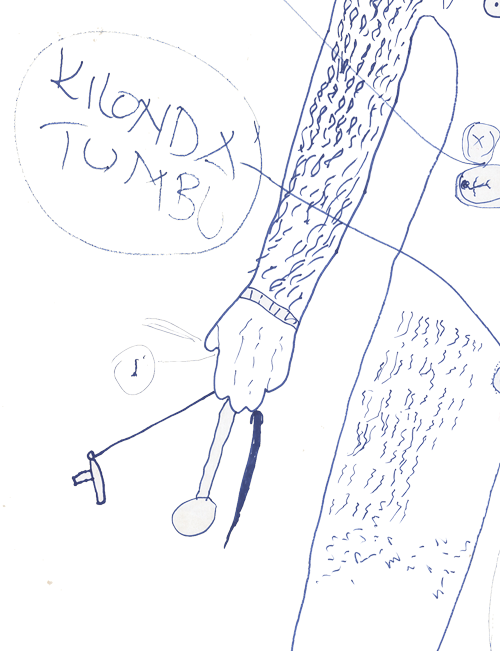Uvira
This body map was created in Uvira by parents of former underage combatants. Staff from AJEDI-Ka, HHI and ECI oversaw this body mapping session.
please click on the image to enlarge
Former underage combatants’ experiences with conflict prompted them to depict a deep sense of despair in the body maps. Participants in the Uvira body mapping exercise explained that the pain was so pronounced that former child soldiers turned to self-medication: “Eyes have seen violence which hurts her heart. This causes her to smoke cigarettes and cannabis.”
consectetur adipisicing elit, sed do eiusmod tempor incididunt ut labore et dolore magna aliqua. Ut enim ad minim veniam, quis nostrud exercitation ullamco laboris nisi ut aliquip ex ea commodo consequat. Duis aute irure dolor in reprehenderit in voluptate velit esse cillum dolore eu fugiat nulla pariatur. Excepteur sint occaecat cupidatat non proident, sunt in culpa qui officia deserunt mollit anim id est laborum.
While former underage combatants endured rejection, distrust and fear from their communities during reintegration, these communities also struggled internally to heal after conflict. Fractures existed within society, beyond tensions between former combatants and the community members. The Uvira body map depicts this sense of rupture, “The image above the body is a school, a church, a hospital and accommodation houses, which are destroyed, resulting from the violence of child soldiers [men as well as women]. There is no more harmony among people and among family members. Buildings and peace are broken from wars in which children were involved. One man carrying a gun makes all the other people scared. They have nothing to do against him and no way to protect themselves. They lack safety.”
The Uvira body map reveals how female former underage combatants faced challenges about how to fulfill expected roles, such as farming. The notes from the map describe, “Her hand carries a weapon and items that were stolen, instead of producing food to feed the family. She has less useful hands because they are used only to fire weapons and fight rather than doing traditional forms of income generation in the village. This is portrayed by lines on her shoulder and a ‘molded’ hand drawn on her side.”
Participants often depicted aggression in the body maps, showing that violence not only occurred during war but could also be a symptom of trauma. The Uvira participants drew the image of the male heart with “a knife and a rock to show the anger and violence within the boys’ emotions.”
The Uvira body map, while illustrating the anger males expressed during reintegration, also expresses the desire for positive relationships: “He also has a flower [in his hand] expressing that he wishes to be loved by his people.”
The body maps illustrate how former underage combatants often use foul language and display hostile attitudes that hindered social acceptance. The notes of the Uvira body map state, “She [the girl depicted on the map] does not listen to her family.” This is illustrated by the girl’s mother, who is portrayed as a smaller female with a line going to the girl’s ear. At the end of the line, an “X” and a question mark indicate that the mother’s advice does not reach the girl. The notes ended with: “Her mother gives her counsel, but she does not follow any of her advice.”







